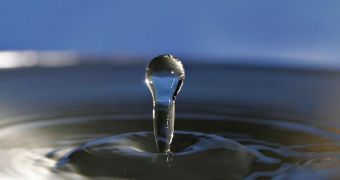The behavior of liquid water at temperatures approaching minus 100º Celsius has been puzzling physicists for a long time. Many experts have tried to produce explanations for this phenomenon, but most of them failed to do so. To date, about four possible scenarios related to this phase behavior have been identified, but a new theoretical study shows that these ideas are in fact specific cases of a much larger, more general model, AlphaGalileo reports. Details of the investigation appear in the latest issue of the respected journal Proceedings of the National Academy of Sciences (PNAS).
The investigation was co-directed by Universidad de Barcelona Faculty of Physics Department of Fundamental Physics Associate Professor Giancarlo Franzese, who collaborated closely with colleague H. Eugene Stanley, the director of the Center for Polymer Studies at the Boston University. Experts Kevin Stokely and Marco G. Mazza, also from the US, participated in the investigation as well.
The thing about water is that it exhibits a highly anomalous macroscopic and microscopic behavior as it remains liquid at temperatures as low as minus 92º Celsius. This is only possible at pressures as high as two kbars, researchers say, but the fact of the matter is that the interactions between the liquid's molecules have been shrouded in mystery until now. “The four [existing] interpretations are based on different hypotheses. In particular, they can be distinguished by the assumed presence or absence of two liquid phases with different densities, and by the possible existence of a critical point,” Franzese says.
“We have found that the balance between these two components determines which of the scenarios is valid. In addition, from our experimental estimates we can conclude that the correct scenario is the one that assumes the presence of a critical point between the two liquids,” the expert adds. The new investigation could have implications for lines of research ranging from molecular biology and geochemistry, but could find more direct and immediate consequences in specific fields, such as cryogenics, cryobiology, and the cryogenic storage for various items, including foods.

 14 DAY TRIAL //
14 DAY TRIAL //